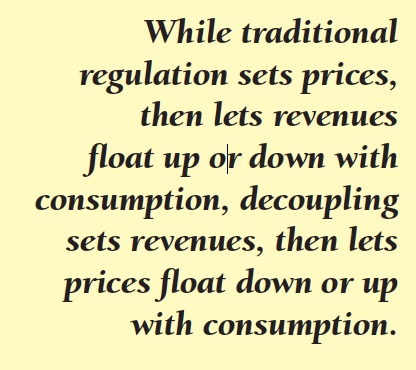
Knowledge Center
We believe that sharing our expertise and collaborations in clean energy policy is how real, effective change happens.
From reports and policy briefs, to webinars and podcasts—RAP advisors have built an extensive collection of resources providing in-depth analysis and practical solutions to today’s energy challenges.
Filter >>
Content Filter:
Under traditional regulation, utilities make more money when they sell more energy. Yet this reality is at odds with explicit public policy objectives that utility and environmental regulators are charged with achieving, including economic efficiency and environmental protection. Many utility-sector… View Summary +

This guide was prepared to assist anyone who needs to understand both the mechanics of a regulatory tool known as decoupling and the policy issues associated with its use. This would include public utility commissioners and staff, utility management, advocates… View Summary +
Compendium of Best Practices is the result of extensive outreach, data gathering, and analysis conducted to identify leading state and local-level best practices in energy efficiency and renewable energy in the United States. The report describes more than 20 practices… View Summary +
These are the technical appendices of a study that modeled a prototypical vertically-integrated electric investor-owned utility in the southwestern US that is considering implementing several energy efficiency portfolios, including the impact of these energy efficiency portfolios on utility shareholders and… View Summary +
This study modeled a prototypical vertically-integrated electric investor-owned utility in the southwestern US that is considering implementing several energy efficiency portfolios, including the impact of these energy efficiency portfolios on utility shareholders and ratepayers as well as the incremental effect… View Summary +
This white paper, prepared for the Arizona Leadership Summit on Solar Energy and Economics held in Phoenix on January 9, 2009, addresses utility sector economic incentives and disincentives and their impact on the deployment of renewable energy. View Summary +
In 2007, the Minnesota legislature enacted a new statute, Section 216B.2412, in which it defined an alternative approach to utility regulation, decoupling, and directed the PublicUtilities Commission (PUC) to “establish criteria and standards” by which decoupling could be adopted for… View Summary +
This document is a Mid-Atlantic Distributed Resource Initative regulatory subgroup scoping paper on dynamic pricing, aligning retail prices with wholesale markets, the adverse impact of distributed resources on utility earnings, and distributed resources in system planning. View Summary +
This paper discusses how portfolio management can improve quality of electric service while reducing costs without impinging on efforts to build competitive retail markets in those states committed to that goal. View Summary +
Topics covered in this paper include power system reliability benefits from distributed energy resources, customer-owned generation, customer supplied ancillary services, and improved pricing signals in wholesale and retailmarkets. View Summary +
The purpose of this paper is to describe implementation options for two concepts: deaveraged distribution credits and distributed resource development zones, as first described in Profits and Progress Though Distributed Resources (NARUC,February 2000). View Summary +
This paper focuses on the actual costs of distribution utilities in the U.S., based on FERC Form 1 filings from 1994-1999, and identifies deviation between particular distribution expansion costs and average marginal and average embedded costs. View Summary +
This document is a part of the Distributed Resource Policy Series and is entitled “Distribution System Cost Methodologies for Distributed Generation: Volume II Appendices.”… View Summary +
This report explores the role that cost-effective energy efficiency and load management resources can play in restoring the demand-supply balance in electricity. View Summary +
The Philippines’ utility industry is still vertically integrated, but it is expected that generation will soon be separated and turned into a more competitive business. Our recommendations focus on the distribution utility. View Summary +

